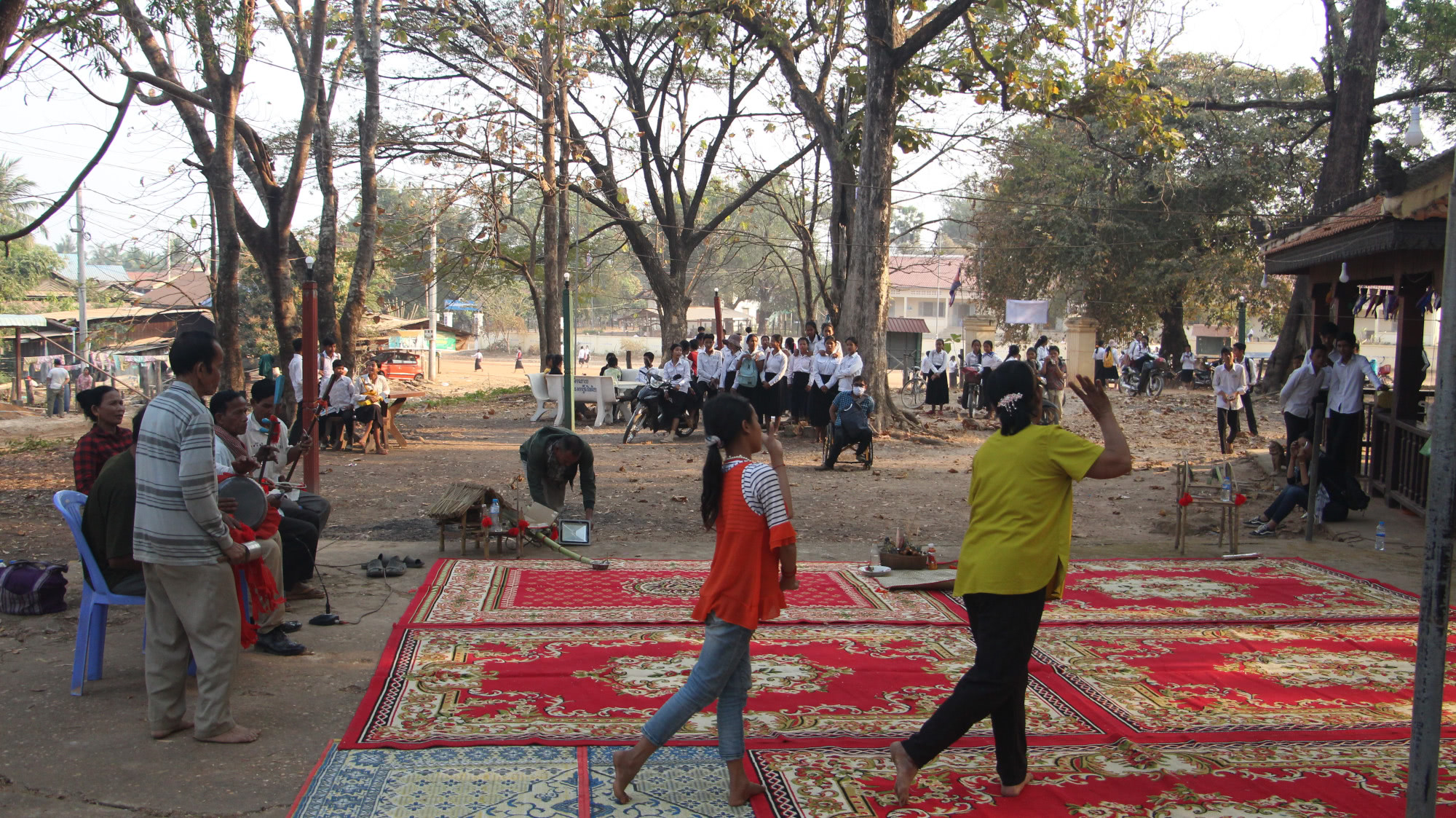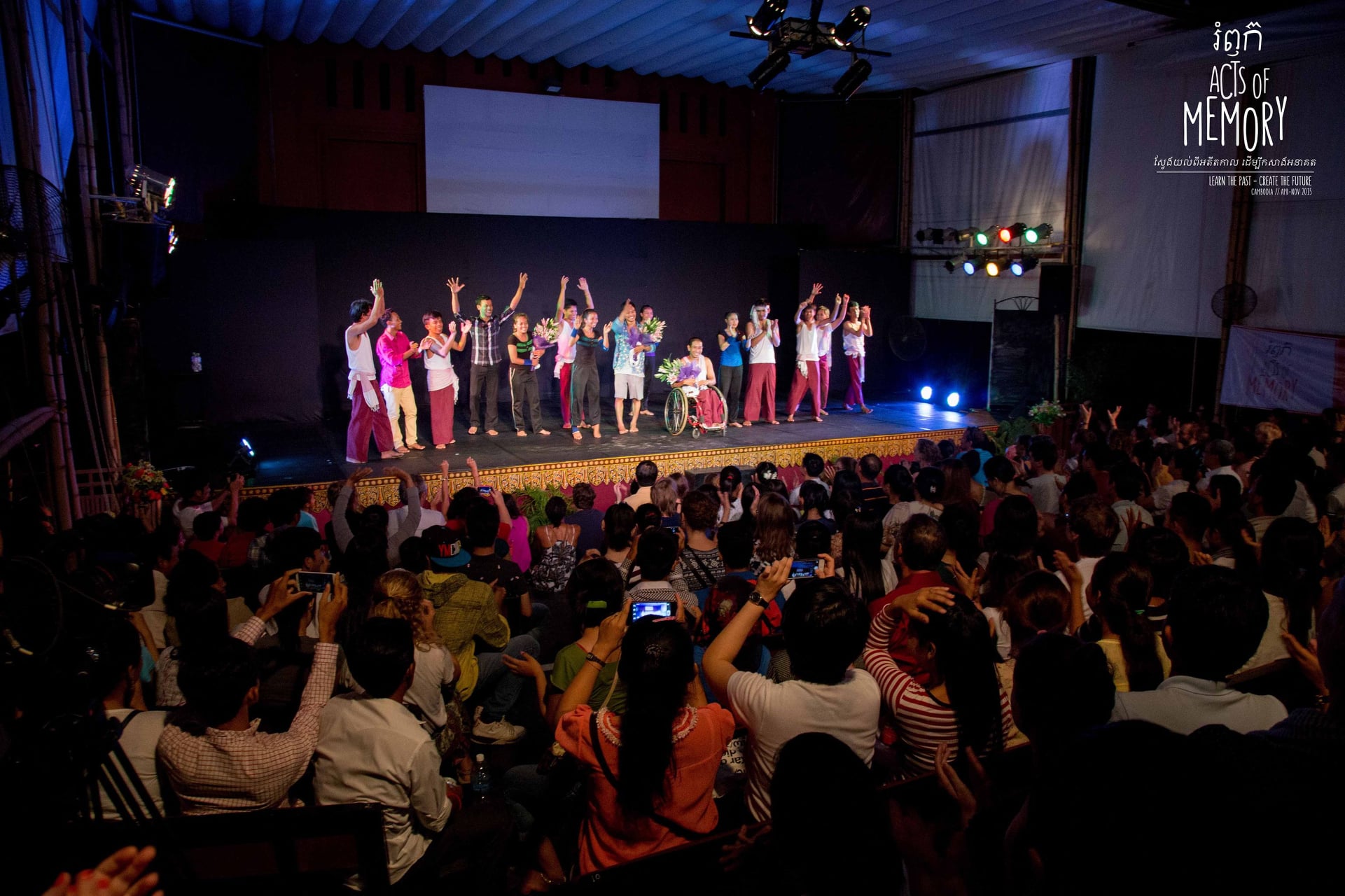Dear Friends,
In the first decade of the 2000s, arts development in Cambodia meant preservation. There was a fear that in the wake of Khmer Rouge control of Cambodia, which saw 90% of the country’s artists perish, Cambodian arts and culture were at risk of being lost forever.
My dear brother Arn Chorn-Pond, our founder, had a vision to connect surviving masters with new students so Cambodian artforms could be transmitted to new generations.

I first met Arn at my parents’ home in Canada as a young person. There, he told me about his dream to lead art delegations to Cambodia. A few years later, Arn’s vision came true. While I was managing my family’s hotel in Siem Reap, Arn would lead groups to experience the transformative power of arts in Cambodia and I was always intrigued by their stirring conversations in the lobby after arriving back at the hotel.
Arn’s dream, that blossomed into Cambodian Living Arts (CLA), made me realize the power of the arts and how it could transform lives. I was especially touched by the joy CLA’s class brought to young people. When a young person finds their space in an artistic role, whether it be through dance, smot, or synchronization of musicians, it’s a moment of peace and society makes sense.
In 2010 I joined CLA as the Executive Director to carry what Arn had started to the next phase. At that time efforts by CLA, other arts NGOs, government ministries and individuals had gradually eased concerns about losing traditional Cambodian artforms. While continuing initiatives that aligned with our early work, the pressing priority was how to make it financially viable for people to stay involved in the arts. For example, studying at the Royal University of Fine Arts (RUFA) in Phnom Penh was tuition free, however students were still expected to finance their own end-of-the-program projects. Facing financial hardships, students would leave their studies to find income. I remember at that time there was a dramatic decline in the number of students at RUFA, as young people were looking to other more financially viable career options. This was one of the motivations behind theArn Chorn-Pond Living Arts Scholarship.
At that time, the arts sector was still facilitated largely by NGOs and the government. By the later stages of the second decade of the 2000s, many of those institutions wound down or adjusted the scope and scale of their operations because they had achieved their aims. We can see the fruits of our collective investments in the new generations. Young people we worked with in the early days, have since grown up and built connections with each other. Today, I am inspired by how the sector is brimming with emerging initiatives, arts coalitions and individuals eager to make their own path through Cambodian arts and culture. Over the next 10 years, I look forward to seeing some of these initiatives grow into sustainable entities – the same way that Arn’s project has grown to become CLA.

Beginning the third decade of our work, Cambodian Living Arts has taken time to reflect on our role within the Cambodian arts ecosystem with the input of stakeholders and field experts. As the sector has grown, our work has developed along with it to meet the maturing needs of multiple generations of post-conflict artists, arts leaders and practitioners who want to enact their own visions of creativity. While we still do community outreach on traditional Cambodian arts, we are creating programs that give senior artists the financial means to dive into their artistic practice to propel them to new creative depths. It also means providing skills building programs to nurture initiatives who have big dreams but need the know-how to make it happen. This natural progression of our work has been supported by our partnership with the Swedish International Development Cooperation Agency (SIDA) and UNESCO’s International Fund for Cultural Diversity (IFCD) among others
With their support, this year CLA has begun the first phase of new programming born from reflecting on how we can best serve the needs of the sector as a whole. We launched the Springboard grant,Creative Catalyst Program and are incubating the Cultural and Creative Industries of Cambodia Association for Development and Advocacy (CICADA) which, among its founders, includes Living Arts Fellows alumni who today hold senior positions at leading arts institutions.
CLA is still growing. We strive to be a forward thinking organization. As Executive Director, I feel honored to be leading my team into CLAs’ new role as a grantmaker. This is a great responsibility and opportunity. We know that around the world best practice on funding is changing as power asymmetries are challenged and the relationship between funder and grantee evolves. With few grants available locally, we are establishing norms around arts funding in Cambodia and we are dedicated to not replicating harmful systems of power. Because we have limited examples locally, we are learning from other contexts and we are mindful that all models must be localized to Cambodia.
Last week I saw a photo of Medha, an all women drum-troupe who come from villages outside of Siem Reap. Medha has been very hard hit by the pandemic but despite having very few opportunities to perform, the picture was of them rehearsing at Wat Bo Pagoda. They were seated on the floor with their young children on their laps or sleeping on a mat while connecting about their craft. This kind of image reminds me of the real situations of the artists we serve. Artists cannot separate their lives and their artistic practice. We always take this perspective into account. This connection grounds me in how CLA first inspired me and motivates me to advance the power of the arts in Cambodia.

As we grow with the sector to enable its continued progress, we are excited to invite our friends, supporters and community stakeholders to join this exciting journey. Each decade of our work can be characterized uniquely. In the early 2000s we focused on transmission and then shifted to facilitating, and now at the start of the 2020s, we are embracing our role as catalyst of creative and independent expression. Cambodian artists and arts leaders of today are experienced and ready to take the reins. Our role is to be a catalyst, finding and creating opportunities to accelerate their success.
We still support our ongoing projects including scholarships and fellowships but they too are evolving. Next year we will deliver a special Living Arts Fellows program for the advanced arts sector professionals involved in CICADA and the Arn Chorn-Pond Living Arts Fellowship is currently undergoing a five year review to refresh the program. In particular we will be refreshing the enrichment program that we offer to Arn Chorn-Pond Living Arts Scholars. For the past 5 years, it has focused on personal development and leadership. Now, following interest and suggestions from the students, we will be focusing more on social development, and how artists and young leaders can make a difference in Cambodia through their work in the arts. This is a great step forward for CLA. I see how as an organization, we are coming full circle from where Arn started to position the arts for Cambodia’s civic and social development.
Across these initiatives that touch people at different levels of experience in the sector ecosystem, we are catalyzing a network for them to call their community. Why? An old adage comes to my mind:If you want to go fast go alone, if you want to go far go together.
Phloeun
